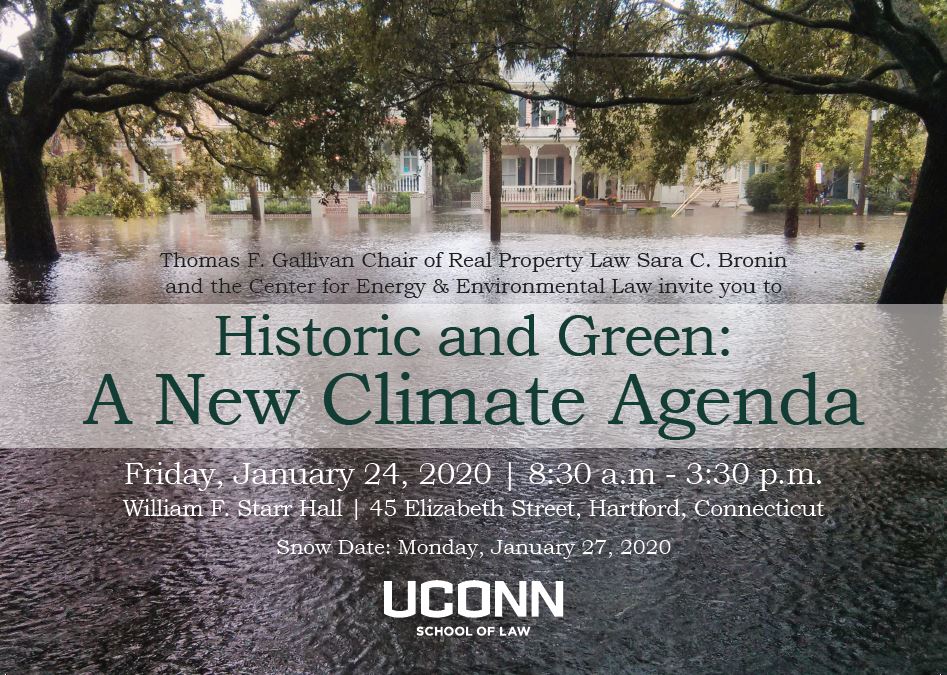Historic preservation is, at its core, an exercise in sustainability. Older buildings are often energy-efficient, made with renewable materials (such as wood or brick), and longer-lasting. Moreover, maintaining an existing structure avoids the environmental costs of replacing it with new construction.
Despite their environmental benefits, Connecticut’s historic places face unprecedented threats, including climate change and needless demolition. Preservationists must recognize that in the face of these threats, not everything can be preserved. At the same time, preservationists must build consensus for changes to law and policy that protect historic places in service of environmental goals.
This UConn School of Law conference, cosponsored by the State Historic Preservation Office, Carmody Torrance Sandak & Hennesy LLP, Preservation Connecticut, and the Connecticut Chapter of the American Planning Association aims to craft a statewide policy agenda that recognizes preservation as a fundamental environmental value.

